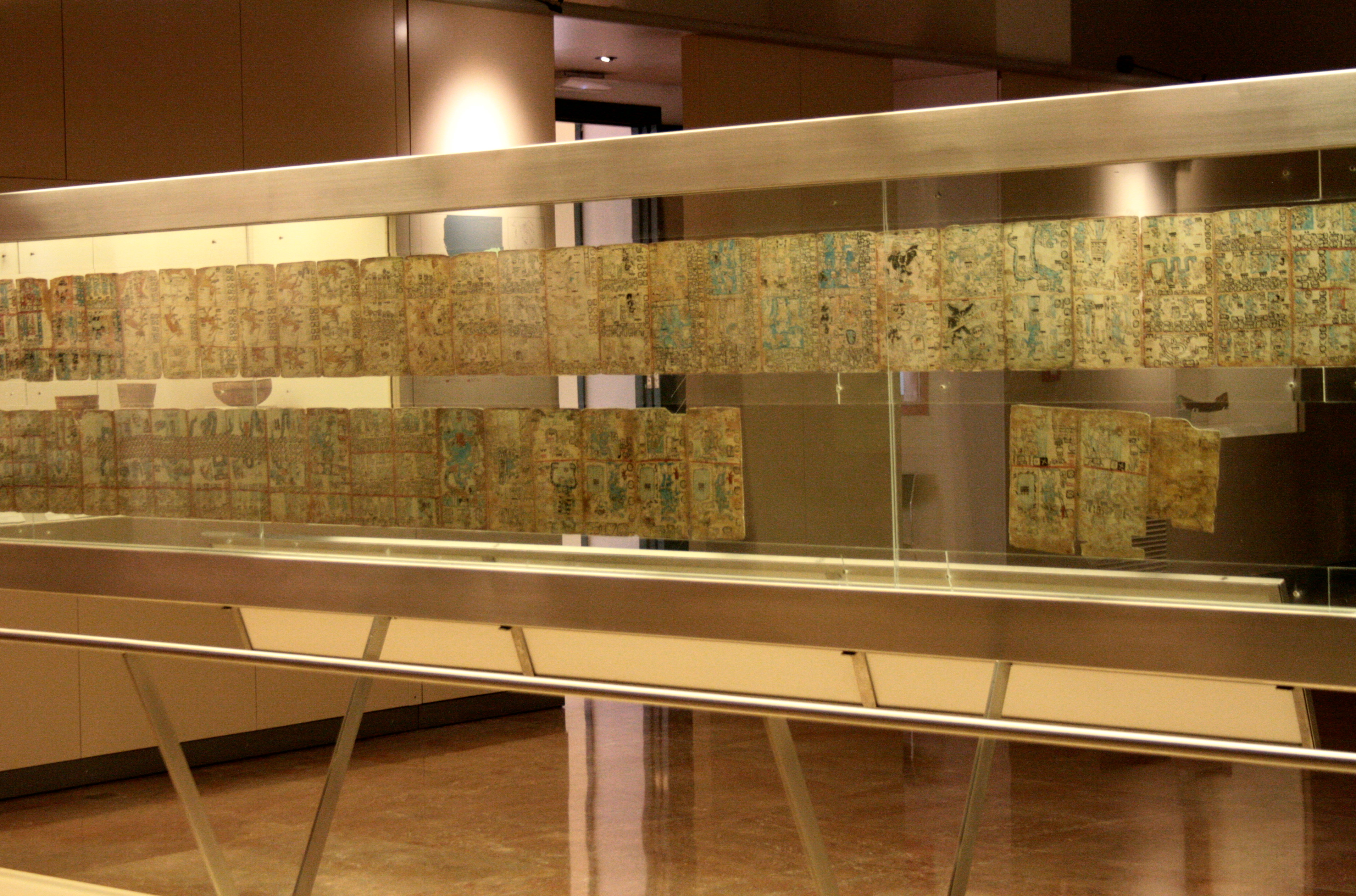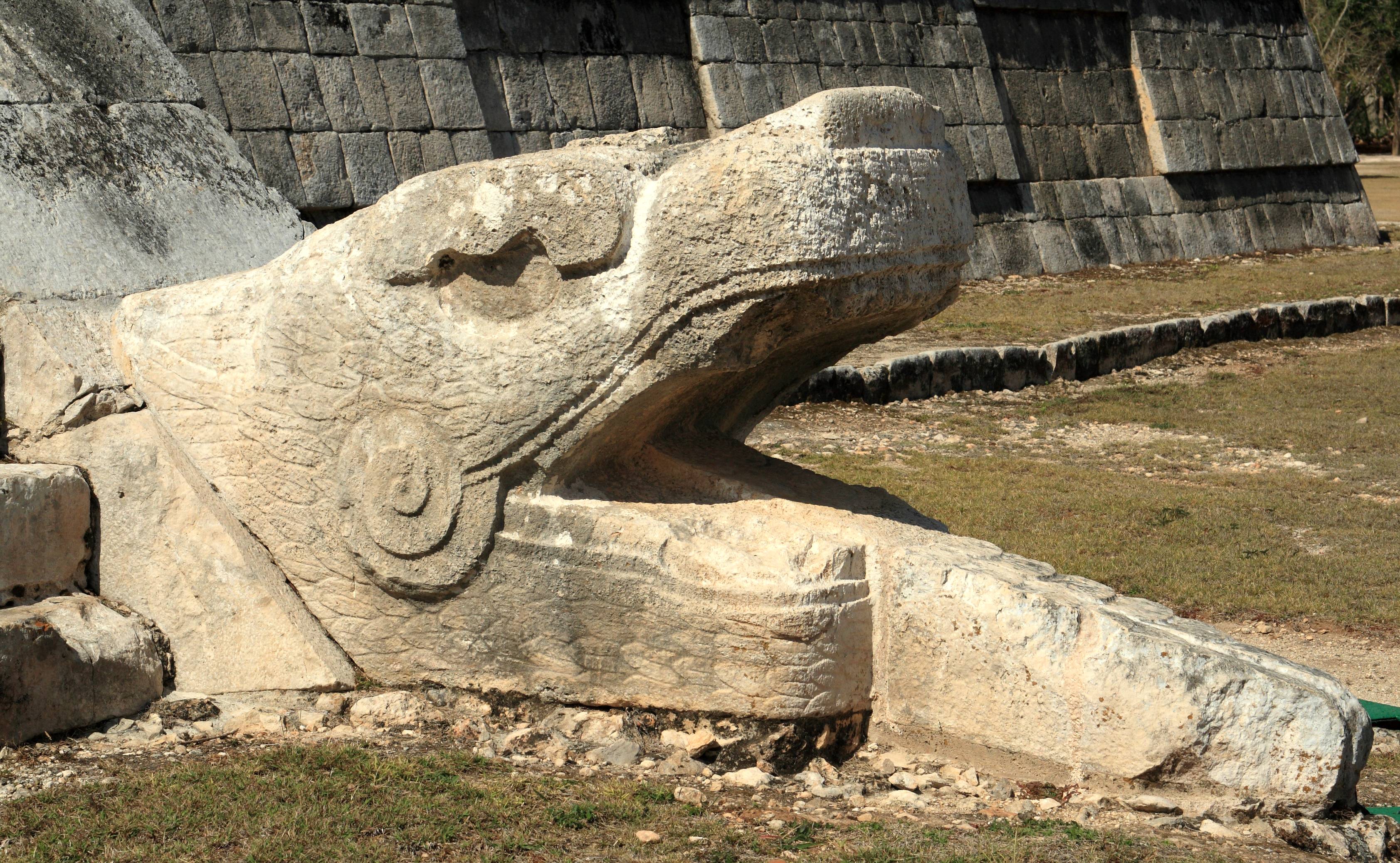|
Madrid Codex (Maya)
The Madrid Codex (also known as the Tro-Cortesianus Codex or the Troano Codex)García Saíz et al. 2010, p. 54. is one of three surviving pre-Columbian Maya books dating to the Postclassic period of Mesoamerican chronology (''circa'' 900–1521 AD). A fourth codex, named the Grolier Codex, was discovered in 1965. The Madrid Codex is held by the Museo de América in Madrid and is considered to be the most important piece in its collection. However, the original is not on display due to its fragility; an accurate reproduction is displayed in its stead. At one point in time the codex was split into two pieces, given the names "Codex Troano" and "Codex Cortesianus". In the 1880s, Leon de Rosny, an ethnologist, realised that the two pieces belonged together, and helped combine them into a single text. This text was subsequently brought to Madrid, and given the name "Madrid Codex", which remains its most common name today. Physical characteristics The Codex was made from a long strip ... [...More Info...] [...Related Items...] OR: [Wikipedia] [Google] [Baidu] |
Museo De America Madrid Codex
Museo may refer to: * Museo, 2018 Mexican drama heist film *Museo (Naples Metro) Museo is a station on line 1 of the Naples Metro. It was opened on 5 April 2001 as the eastern terminus of the section of the line between Vanvitelli and Museo. On 27 March 2002 the line was extended to Dante Dante Alighieri (; – 14 Se ..., station on line 1 of the Naples Metro * Museo, Seville, neighborhood of Seville, Spain {{disambiguation ... [...More Info...] [...Related Items...] OR: [Wikipedia] [Google] [Baidu] |
Lacandon Language
Lacandon (''Jach-tʼaan'' in the revised orthography of the '' Instituto Nacional de Lenguas Indigenas'') is a Mayan language spoken by all of the 1,000 Lacandon people in the state of Chiapas in Mexico. Within Chiapas, Lacandon is spoken in Betel The betel (''Piper betle'') is a vine of the family Piperaceae, which includes pepper and kava. The betel plant is native to Southeast Asia. It is an evergreen, dioecious perennial, with glossy heart-shaped leaves and white catkins. Betel plan ..., Lacanjá San Quintín, Lake Metzaboc, Metzaboc, and Najá. Native Lacandon speakers refer to their language as ''Jach tʼaan'' or ''Hach tʼan''. Most Lacandon people speak Lacandon Maya. Most also speak Spanish. Phonology The following tables list the standard phonemes of the Lacandon language. Consonants # References {{DEFAULTSORT:Lacandon Language Articles in class projects/Rutgers Agglutinative languages Mayan languages Indigenous languages of Mexico Indigenous ... [...More Info...] [...Related Items...] OR: [Wikipedia] [Google] [Baidu] |
Mayanist
A Mayanist ( es, mayista) is a scholar specialising in research and study of the Mesoamerican pre-Columbian Maya civilisation. This discipline should not be confused with Mayanism, a collection of New Age beliefs about the ancient Maya. Mayanists draw upon many inter-related disciplines including archaeology, linguistics, epigraphy, ethnology, history, photography/ art, architecture, astronomy and ceramics. The term ''Mayanist'' was coined by parallel with specialised fields studying other historical civilisations; see for example, Egyptologist ( Ancient Egypt) and Assyriologist ( Ancient Mesopotamia). It has been in widespread use from the late 19th century onwards, particularly by those who have studied and contributed to the decipherment of Maya hieroglyphics, the complex and elaborate writing system which was developed by the ancient Maya. See also * Egyptologist * Assyriologist * Sinologist Sinology, or Chinese studies, is an academic discipline that focus ... [...More Info...] [...Related Items...] OR: [Wikipedia] [Google] [Baidu] |
Madrid Codex 6
Madrid ( , ) is the capital and most populous city of Spain. The city has almost 3.4 million inhabitants and a metropolitan area population of approximately 6.7 million. It is the second-largest city in the European Union (EU), and its monocentric metropolitan area is the third-largest in the EU.United Nations Department of Economic and Social AffairWorld Urbanization Prospects (2007 revision), (United Nations, 2008), Table A.12. Data for 2007. The municipality covers geographical area. Madrid lies on the River Manzanares in the central part of the Iberian Peninsula. Capital city of both Spain (almost without interruption since 1561) and the surrounding autonomous community of Madrid (since 1983), it is also the political, economic and cultural centre of the country. The city is situated on an elevated plain about from the closest seaside location. The climate of Madrid features hot summers and cool winters. The Madrid urban agglomeration has the second-larges ... [...More Info...] [...Related Items...] OR: [Wikipedia] [Google] [Baidu] |
Nojpetén
Nojpetén (also spelled Noh Petén, and also known as Tayasal) was the capital city of the Itza Maya kingdom of Petén Itzá. It is located on an island in Lake Petén Itzá in the modern department of Petén in northern Guatemala. The island is now occupied by the modern town of Flores, the capital of the Petén department, and has had uninterrupted occupation since pre-Columbian times. Nojpetén had defensive walls built upon the low ground of the island, which may have been hastily constructed by the Itza at a time when they felt threatened either by the encroaching Spanish or by other Maya groups. Etymology Writing many years after his journey across Petén, conquistador Bernal Díaz del Castillo called the city ''Tayasal''; this appears to have been a Hispanicisation of the Itza language ''ta itza'' ("at the place of the Itza"). The Itza king Kan Ek' referred to the city by the name Nojpetén when he spoke to the Spanish in 1698. Nojpetén, from the Itza ''noj peten' ... [...More Info...] [...Related Items...] OR: [Wikipedia] [Google] [Baidu] |
Tulum
Tulum (, yua, Tulu'um) is the site of a pre-Columbian Mayan walled city which served as a major port for Coba, in the Mexican state of Quintana Roo. The ruins are situated on cliffs along the east coast of the Yucatán Peninsula on the Caribbean Sea. Tulum was one of the last cities built and inhabited by the Maya and achieved its greatest prominence between the 13th and 15th centuries. Maya continued to occupy Tulum for about 70 years after the Spanish began occupying Mexico, but the city was abandoned by the end of the 16th century. Tulum is one of the best-preserved coastal Maya sites, and today a popular site for tourists. History and description The site might have been called Zama, meaning ''City of Dawn,'' because it faces the sunrise. Tulum stands on a bluff facing east toward the Caribbean Sea. ''Tulúm'' is also the Yucatán Mayan word for ''fence'', ''wall'' or ''trench.'' The walls surrounding the site allowed the Tulum fort to be defended against inva ... [...More Info...] [...Related Items...] OR: [Wikipedia] [Google] [Baidu] |
Mayapan
Mayapan (Màayapáan in Modern Maya; in Spanish Mayapán) is a Pre-Columbian Maya site a couple of kilometers south of the town of Telchaquillo in Municipality of Tecoh, approximately 40 km south-east of Mérida and 100 km west of Chichen Itza; in the state of Yucatán, Mexico. Mayapan was the political and cultural capital of the Maya in the Yucatán Peninsula during the Late Post-Classic period from the 1220s until the 1440s. Estimates of the total city population are 15,000–17,000 people, and the site has more than 4,000 structures within the city walls, and additional dwellings outside. The site has been professionally surveyed and excavated by archeological teams, beginning in 1939; five years of work was done by a team in the 1950s, and additional studies were done in the 1990s. Since 2000, a collaborative Mexican-United States team has been conducting excavations and recovery at the site, which continue. Layout Mayapan is 4.2 square kilometers (about 1. ... [...More Info...] [...Related Items...] OR: [Wikipedia] [Google] [Baidu] |
Chichen Itza
Chichen Itza , es, Chichén Itzá , often with the emphasis reversed in English to ; from yua, Chiʼchʼèen Ìitshaʼ () "at the mouth of the well of the Itza people" was a large pre-Columbian city built by the Maya people of the Terminal Classic period. The archeological site is located in Tinúm Municipality, Yucatán State, Mexico. Chichen Itza was a major focal point in the Northern Maya Lowlands from the Late Classic (c. AD 600–900) through the Terminal Classic (c. AD 800–900) and into the early portion of the Postclassic period (c. AD 900–1200). The site exhibits a multitude of architectural styles, reminiscent of styles seen in central Mexico and of the Puuc and Chenes styles of the Northern Maya lowlands. The presence of central Mexican styles was once thought to have been representative of direct migration or even conquest from central Mexico, but most contemporary interpretations view the presence of these non-Maya styles more as the result of cul ... [...More Info...] [...Related Items...] OR: [Wikipedia] [Google] [Baidu] |
Petén Department
Petén is a department of Guatemala. It is geographically the northernmost department of Guatemala, as well as the largest by area at it accounts for about one third of Guatemala's area. The capital is Flores. The population at the mid-2018 official estimate was 595,548. Geography The Petén department is bordered on the east by Belize and by Mexico (with the Mexican states of Chiapas to the west, Tabasco to the northwest and Campeche to the north). To the south it borders the Guatemalan departments of Alta Verapaz and Izabal.ITMB Publishing Ltd. 2005. Much of the western border with Mexico is formed by the Usumacinta River and its tributary the Salinas River. Portions of the southern border of the department are formed by the rivers Gracias a Dios and Santa Isabel. The Petén lowlands are formed by a densely forested low-lying limestone plain featuring karstic topography. The area is crossed by low east-west oriented ridges of Cenozoic limestone and is characterise ... [...More Info...] [...Related Items...] OR: [Wikipedia] [Google] [Baidu] |
Guatemala
Guatemala ( ; ), officially the Republic of Guatemala ( es, República de Guatemala, links=no), is a country in Central America. It is bordered to the north and west by Mexico; to the northeast by Belize and the Caribbean; to the east by Honduras; to the southeast by El Salvador and to the south by the Pacific Ocean. With an estimated population of around million, Guatemala is the most populous country in Central America and the 11th most populous country in the Americas. It is a representative democracy with its capital and largest city being Nueva Guatemala de la Asunción, also known as Guatemala City, the most populous city in Central America. The territory of modern Guatemala hosted the core of the Maya civilization, which extended across Mesoamerica. In the 16th century, most of this area was conquered by the Spanish and claimed as part of the viceroyalty of New Spain. Guatemala attained independence in 1821 from Spain and Mexico. In 1823, it became part of t ... [...More Info...] [...Related Items...] OR: [Wikipedia] [Google] [Baidu] |
Belize
Belize (; bzj, Bileez) is a Caribbean and Central American country on the northeastern coast of Central America. It is bordered by Mexico to the north, the Caribbean Sea to the east, and Guatemala to the west and south. It also shares a water boundary with Honduras to the southeast. It has an area of and a population of 441,471 (2022). Its mainland is about long and wide. It is the least populated and least densely populated country in Central America. Its population growth rate of 1.87% per year (2018 estimate) is the second-highest in the region and one of the highest in the Western Hemisphere. Its capital is Belmopan, and its largest city is the namesake city of Belize City. Belize is often thought of as a Caribbean country in Central America because it has a history similar to that of English-speaking Caribbean nations. Indeed, Belize’s institutions and official language reflect its history as a British colony. The Maya civilization spread into the area of B ... [...More Info...] [...Related Items...] OR: [Wikipedia] [Google] [Baidu] |






